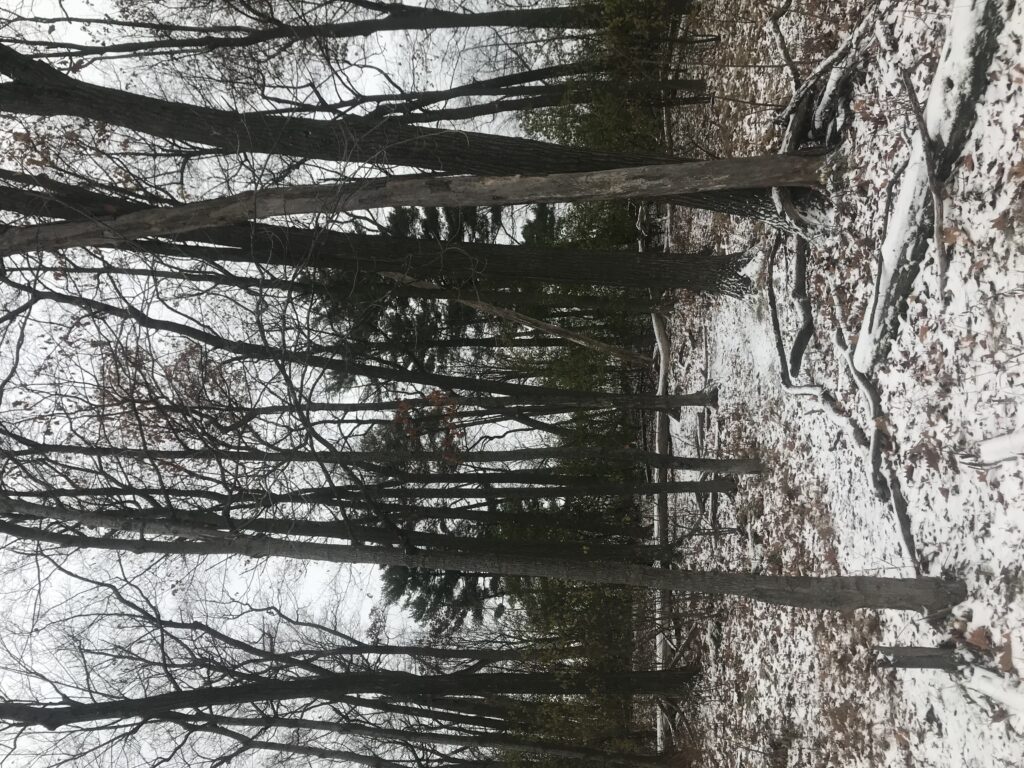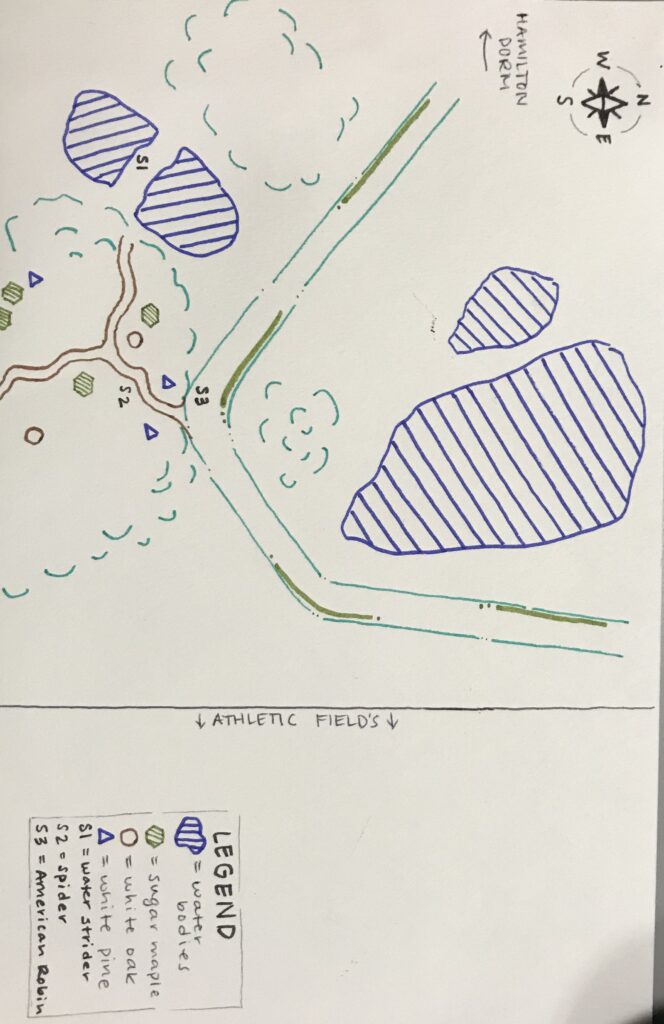Phenological Changes in Place: Holland’s Naturally Curious
There were many correlations between the field notes made in Hollands Naturally Curious, and my phenology spot. Some of the species/organisms I observed during my last visit to my phenology location seem to have gone into hibernation, or perhaps are active, but no longer inhabit my area of study. For example, many of the species Holland refers to, including some of the families of the organisms I observed, have already begun hibernation; moths, birds, and some mammals (such as squirrels) that I observed are among these organisms. Though I did visit my spot somewhat early in the day, I don’t believe I would have seen a change in wildlife appearances if I had visited at a later time. After reading “November” I was able to identify some Foliose lichen on some of the trees in the area. I was surprised to learn that lichen can survive throughout the winter, if frost or ice does not cover it of course. The chapter November was subtitled “quiescence” which I discovered means inactivity or dormancy. This subtitle is a perfect description of the current conditions of my phenology location.
Since my last visit, my sense of this place has certainly changed. As I included in my Grinell-styled journal entry, my location no longer feels alive. The deciduous trees have shed their last leaves, shrubs and long weed stalks have died and released all seeds and shed all flowers. A thin layer of snow coats the ground, leaving no view of the soil or O horizon. There is no sign of wildlife whatsoever. Throughout the 15 minutes I visited the site, I never once observed a life form, so much as a squirrel or bird. The only non-cynical word I can think of to describe this changed landscape is ‘un-alive’.
The characteristic change that concerned me the most was how visible human life has become from my phenology spot. The thick foliage used to conceal all buildings and man made structures from view. Now, the thin, naked trees expose the buildings and unnatural landscape, altering my perception of the once secret spot. Unfortunately, these changes can be observed on a national, even global scale. Even environments that are not experiencing the first hits of the winter season are encountering human activity and exploitation of the land. Landscapes all over the world are changing due to human intervention and in turn, the senses of these places are changing, for the worse. The more the natural landscape is subjected to human destruction/transformations, the weaker the connection between man and nature becomes.
This cyclic behavior is what has created insignificant/unimportant places in our country and all over the world. The miles of strip malls and fast food chains that exist within our country exist and prevail because of our desire for comfort and our hunger for wealth.

As you can see, there is a lonely, empty sense associated with this photo, at least in my mind. Very hollow and lacking life. (sorry I can’t figure out how to rotate it!) 

